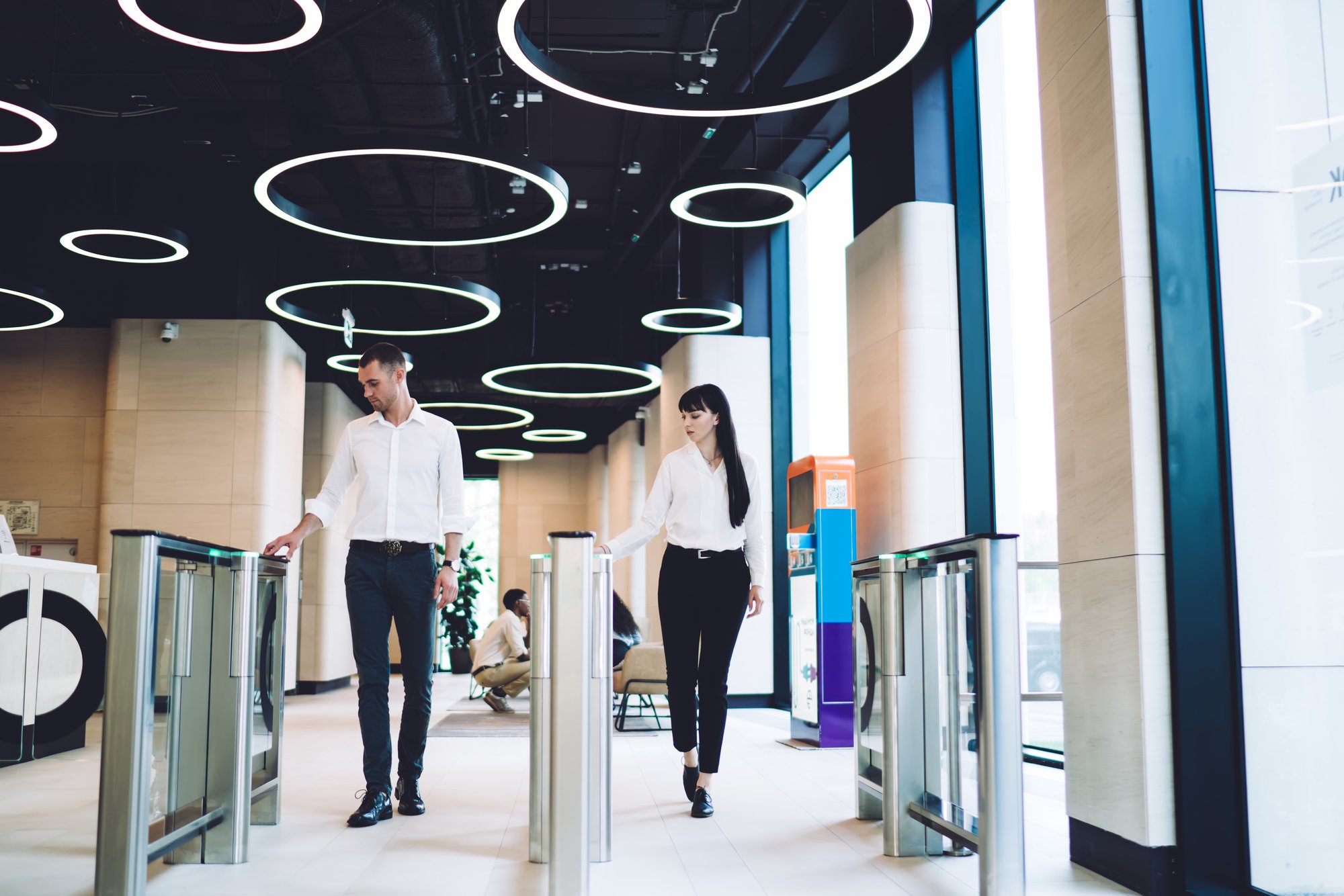Businesses have always faced security threats. But in today’s digital-first society, the implications of a potential breach loom large. Sensitive information is housed on-site; valuable products and assets are hosted in offices, and the safety of both employees and visitors is paramount. These concerns have many building managers considering upgrades to their access control systems.
Frictionless mobile access control gives businesses greater visibility into all activity within their space. As a result, security personnel can spot incidents promptly and respond immediately.
What’s more, taking quicker action to resolve or mitigate breaches can save companies from substantial financial and reputational damage. However, implementing modern security measures first requires integrating advanced visitor and building management systems.
Comprehensive security infrastructure demands robust access control protocols—but the enhanced security needed to protect buildings today can’t come at the expense of daily operations for visitors and employees. The solution? Access control systems that can prevent breaches without causing friction for authorized individuals.
Streamlining Business Operations: The Role of Frictionless Access Control Systems
The goal of frictionless security is to ensure the safety of both people and property. However, this objective shouldn’t inconvenience those trying to access the spaces they’re authorized to use. Rather, the approach aims to combine robust prevention and mitigation measures while maintaining ease of access for employees and visitors. So, with convenience in mind, frictionless access control systems that provide mobile access and software-defined access control solutions are becoming popular.

In fact, frictionless access control is projected to grow at a CAGR of 12.6% between now and 2031, hitting a market cap of $50.4 billion. This exponential increase in popularity is largely driven by technology advancements that simultaneously improve frictionless building security and visitor convenience. For example, they enable users to enter authorized spaces with their smartphone. This isn’t just more convenient; it’s also more secure. Potential bad actors can swipe keycards or fobs, but people pay greater attention to where their phone is.
Cloud-based access management systems also make your organization more efficient by eliminating the delays caused by issues with legacy solutions or misplaced access cards. In addition, it streamlines visitor management protocols by allowing authorized users building or room access from their phones.
Enhancing User Experience: Leveraging Apple Watch and Smartphone Use for Seamless Access and Workplace Management
Integrating smart access control with third-party building management systems opens up a world of potential uses that can make building access more convenient and secure. For instance, you can integrate mobile access control with coworking, workplace, and tenant experience apps to provide more granular access management to specific amenities or spaces within a building. Employees may need special access to specific rooms, or members may need additional access to pools or gyms.
Solutions like Sentry Mobile Access embody the concept of smart access management systems. Authorized individuals can use their phones to gain access to authorized spaces via a wireless NFC door credential; the cloud-based software integrates with major legacy systems to provide a secure, centralized, and easy-to-use access control system.
Mobile access allows authorized individuals to navigate secure spaces using their personal devices. This serves not just to make compliance with security measures more convenient for visitors and employees, but also allows building managers to leverage the power of a digitally integrated security ecosystem to enhance the sophistication of their administration.
Integrating access control with workplace booking software such as Nexudus also promotes workplace efficiency. Users can book meeting rooms or desk spaces ahead of time through their devices. This gives both staff and visitors the speed and convenience of finding and unlocking the workspaces they need from their phones or smart wearable.
Other software integrations, such as Coworks, enable building or customer experience managers to continuously monitor occupancy, usage and capture tenant or visitor visibility. Alternatively, companies such as HqO allow building managers and employees to book conference rooms, improve workplace and community engagement, communicate building information and provide digital concierge services via the tenants, employees or visitors smartphone.

Simplifying Administrative Tasks: Centralized Management of Access Control
Centralized access control systems allow security staff to monitor and log events from one platform in real time. This cuts back on the amount of administrative labor necessary to maintain robust, standardized security policies, facilities management and front desk services. Security managers or front office staff can configure the system to meet the exact needs of the building by integrating multiple workplace management software solutions under one cohesive platform.
In addition, mobile access control systems help security personnel to grant access to take care of tasks through issuing time limited mobile credentials to authorized users for specific floors and doors. This gives staff more time to conduct other duties and reduces potential front desk and visitor management labor costs for companies.
Finally, implementing centralized workplace management systems also comes with an improved return on investment (ROI) for buildings. The technology doesn’t require the production or consistent replacement of keycards or fobs. Instead, employees and guests use their mobile phones to access their workspaces. This enables businesses to improve their security levels while simultaneously cutting costs.
These technological advances provide enhanced security measures that don’t waste time or resources for authorized employees and visitors.
Providing Frictionless Access Control With Advanced Integrations
The realities of building management today come with a heightened degree of necessary precaution. Yet, despite the increased threat levels many businesses face, advanced security technology make buildings more secure than ever.
Frictionless access control systems provide a better user experience for employees and visitors, while simultaneously presenting a more robust and united front to unauthorized entrants. The convenience they provide makes an average day in the office more efficient by automating certain tasks like securing meeting rooms, managing visitor and employee workplace flow and experience.
However, to garner these benefits, building managers must integrate technology powerful enough to support a frictionless experience. This is where smart building access and front desk solutions providers like Sentry Interactive come in.
Sentry Interactive provides mobile access control management, digital front desk support, visitor management and digital workplace communications to streamline security and building management. Contact us today to learn more about our advanced workplace management solutions.


